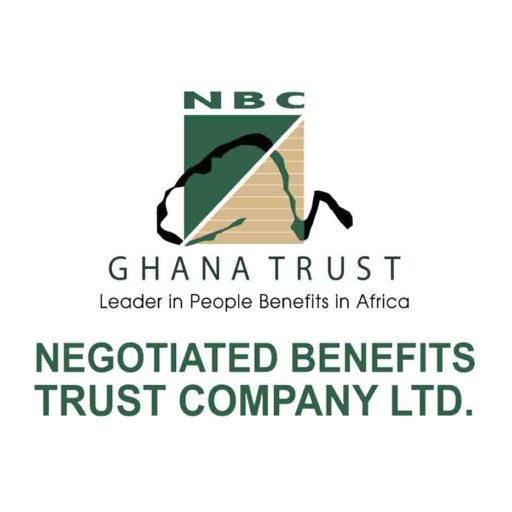
TURBULENCE IN THE FINANCIAL MARKETS: CAN WE TRUST THE PENSION FUND COMPANIES?
With the growing turbulence over the last couple of years, which is still unfolding, it is time to look at the impact on the young pensions industry. Within the last year, we have witnessed the transition and collapse of seven (7) commercial banks for a variety of reasons. More recently, a number of savings and loan companies were also pronounced insolvent and lost their operating licenses. The stories and experiences from some fund management companies operating under the Securities and Exchange Commission (SEC) send very worrying signs to investors.
Taxpayers have had to commit funds to assist in the recovery plans of these institutions. In addition, some employees have concerns with their retirement funds and provident funds. A number of these banks were active in the pension market as investors or custodians.
Pension funds are long-term funds and rely on stability in markets as well as in the economy to yield results. In addition, the members of the funds also need assurance and confidence that upon the critical age of retirement, their funds are safe and can be available for the long-awaited glory of retirement.
Our new pensions regime started in the year 2010 on the backdrop of the new law passed by Parliament in 2008, Act 766, with the objective of “Retirement income security”. The effective participation of the private sector service providers started in December 2013.
Pension is the series of payments as income or stipend which is paid to the recipient regularly after retirement. Normally, this is paid monthly. Variations of pensions abound in the form of lump-sum payments on retirement, annuities purchased for the regular payments after retirement, and also structured payments as proceeds from investments.
The new pensions act was designed primarily for retirement income enhancement and to complement the existing Social Security and National Insurance Trust provisions. The framework for the management and participation of the private sector took into account the following factors:
• the enhancement of security of members funds
• use of experts in the service delivery and also
• transparency in the administration of the members’ funds.
Security of Members Funds
Members’ funds are managed with a segregated structure – the custodians keep the funds and security documents of all investments. Contributions are paid to the custodians, and the administrator ensures that these are reconciled diligently. The Fund Manager licensed by SEC provides advice on the fund investments. There are lessons from the collapsed banks that the function of the custodian is under threat from the risks of the banks.
Experts in Service Delivery
The Custodians are specialized in the delivery of holding arrangements as well as relationships with the depository institutions. All the licensed custodians in Ghana are subsidiaries of banks. These institutions are well experienced in holding client assets and providing the needed recording and monitoring of the income receipts. The extent to which the assets are segregated has been tested during the turbulence. Are these custodian institutions actually independent of the Banks?
The fund managers are specialized in asset investments and undertake rigorous assessment of market risks in relation to returns that are provided to the funds.
The administrators and trustees are experts in ensuring the treasury management, accounting and data flows maintain sufficient information to support all decisions on members’ funds.
Where there is evidence of conflict of interest in the operations, they lead to warning signs to all participants that the short term convenience for connected party gains will jeopardize the stability of the pensions industry. We should avoid these as Fund Managers, Custodians and Trustees.
Transparency in Administration
The trustees (corporate and individual) licensed are required to provide regular reports on all aspects of the fund administration and investment activities. Regular audits are required in addition to data management systems that are robust. Annual audits must be provided on the funds as well as the corporate entity. In addition, the board of trustees for each fund must be actively engaged in the administration of the fund. Key factors to consider include:
• conflict of interest in activities, related parties and subsidiary structures may pose a risk to the funds;
• terms of delegated responsibilities, specialized or discretionary mandates for the management services;
• capacity to manage the data, monitor performance of service providers and
• capacity to identify risks to members, governance;
• and the quality of the Trustee Board
The Role of NPRA
In these early stages of the industry, guidance from the National Pensions Regulatory Authority (NPRA) will form the foundation upon which the trustees and service providers operate. Efforts by the regulator have been directed at the minimizing risks of the pensions trustee. Market risks which may arise from the bulking of investment funds with treasury funds have been observed among custodians. This is a major risk to be resolved by the custodians.
In addition, the pension assets are at risk if this is decoupled from employee compensations. The laws in Ghana rank employee compensation as a priority creditor in the situation of liquidation. One of the proposed resolutions in the current financial turbulence places pensions assets according to the banking laws about eighth (8th) in the priority of creditors from the receiver.
This will weaken confidence in the long term stability of the pensions industry at this early age. NPRA will help build confidence where they can obtain clarity on the nature of pension funds as distinguished from unsecured creditors of the banks.
